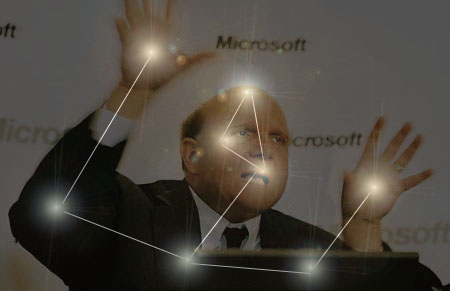Will this new reorganization work? That is the question that everyone wants to know (especially Microsoft). Remember that Ballmer believes that to compete in the market they need to stop being a software company and focus on devices and services as their core business. Remember we told you that Microsoft now sees Mobile as the heart of the computer world (very different from the more typical enterprise network). Because of this they have brought in Terry Myerson (former head of Windows Phone) to handle all operating system engineering. It is an interesting move as the current people running Windows have done a pretty good job until they tried to make Windows like Windows Phone. Of course before Myerson moved over to Windows phone in 2010 he was in charge of the Exchange team (2002 to 2010) where we saw Microsoft make some dramatic and successful changes. It could be Myerson’s time with managing the Exchange team that convince Ballmer to move him into his slot with Windows Phone and now all Operating Systems. However, during the three years Myerson has been with Windows Phone things have not been all beer and pizza and Window Phone is still struggling to keep the single digit market share. For us this move might not have been for the best simply because success with an application (even one as complex as Exchange) does not mean success with an entire OS.
Next up is Staya Nadella who used to run Microsoft’s Server and Tools business and now gets to handle Microsoft’s new Cloud services and Enterprise group. Nadella seems like a good fit for this, but thinking about building enterprise class networks and software to support them is a little different from building cloud services. The ideas are very similar, but execution and scope are a little different. It is also important to remember that Microsoft is moving away from their profitable enterprise customers and focusing on the cloud (to develop a solid revenue stream). Nadella is going to face an uphill battle especially after the revelations about Microsoft cooperation with the NSA and others to provide access to nearly all of their services (from Skype to Skydrive). Again the move here seems to be a good fit, but combining these two markets seems unusual and perhaps even counterproductive.
Julie Larson-Green is moving from running Windows Engineering to Executive VP of Devices and Studio Engineering. Here the move seems more semantic than anything else. Larson-Green already worked on engineering Microsoft hardware products (and how their software ran on them) which means that this is not that big of a departure and is line with her work on the user interface for Windows 7, Office, and other core Microsoft products. Green has also been identified as a possible successor to Ballmer if he ever leaves although no one can confirm if this will actually happen. It is likely that Ballmer sees Green as a key resource in moving his vision of the user experience along in terms of hardware design because of her work with the user interface on so many of Microsoft’s products. Again this is potentially a good fit, but the division is an odd choice.
Another unusual move by Microsoft is to appoint Dr. Qi Lu as the head of Applications and Services. This is very similar to bringing in the head of Windows Phone to run all operating systems. Lu was formerly the head of Microsoft’s Online Services Division which included Bing and Microsoft’s online advertising unit (remember the one that Microsoft wrote off and was looking to sell?) Lu also comes from Yahoo! which is not the best recommendation for someone that is going to be in charge of a critical portion of your online business. Now the guy that failed to make Bing and Microsoft’s advertising business successful is going to be running Office 365, Yammer, Skype, Lync, Exchange, SharePoint and more. We really have no idea what Ballmer is thinking here, but we do hope there is a strategy behind it.
These represent the major changes to Microsoft. Looking at them it looks a lot like Ballmer is circling the wagons on his personal vision for Microsoft’s future (which he can do). The problem is that Ballmer’s vision for the future has not met with open arms by the market. There is still a lack of real vision when it comes to putting the right products into the hands of Microsoft’s customers (consumer or otherwise). Microsoft cannot reorganize vision and consumer acceptance, they have to actually begin to build the software, services and devices that people want and trust something that is hard to do given their cooperation with the NSA. Microsoft also has to stop planning for the last war and working to prepare for future markets. Looking at their current strategy they are still competing against a product line that is becoming saturated. Their mobile and tablet focus (along with services) is very late to the game. Sure they can try to build momentum for this focus, but that does not mean that they should stop moving forward and looking at new markets and technologies.
So Steve Ballmer is looking to rebuild Microsoft into a more nimble and flexible company. I wish I could say that this was a believable goal, but even after the restructure we see Microsoft failing to act on new markets and technologies. Microsoft (more specifically Ballmer) is saying they will not consider wearable computing. This is a market that their competition is already diving into. Microsoft is foolish to ignore this new market when it is just getting started. This lack of vision is what has hurt Microsoft in the past and is likely to continue to do so even with new leadership.
Tell us what you think in our Forum

